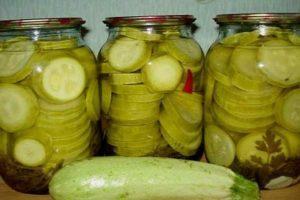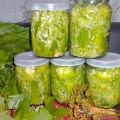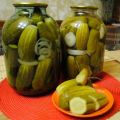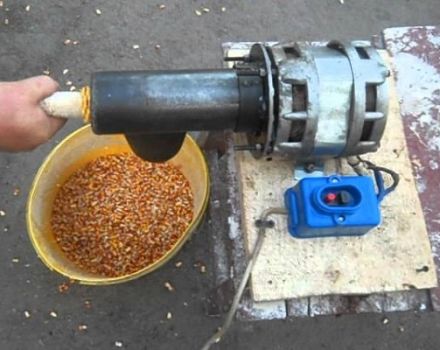TOP 8 recipes for cold pickled cucumbers for the winter
Homemade preparations are especially popular. Each family remembers and stores their favorite vegetable recipes using different technological methods. The advantage of homemade preparations is that when choosing ingredients, you can independently adjust the amount of salt or acid. For the winter, pickled cucumbers or tomatoes are prepared in a cold or hot way.
The principles of cold pickling cucumbers
Pickling is one of the types of canning with the addition of salt, acetic, malic or citric acid. Under the influence of additives, cucumbers change their taste, but do not begin to ferment or mold.
Rules for choosing cucumbers
Take small vegetables for the marinade. The advantage of this rule is that small fruits cook faster.
For pickling in large jars, it is customary to use medium-sized cucumbers. One of the canning tricks is to use fruits of equal volume so that the degree of cooking is the same.
In addition, the fruit should not be damaged and even. This is the key to uniform salting.
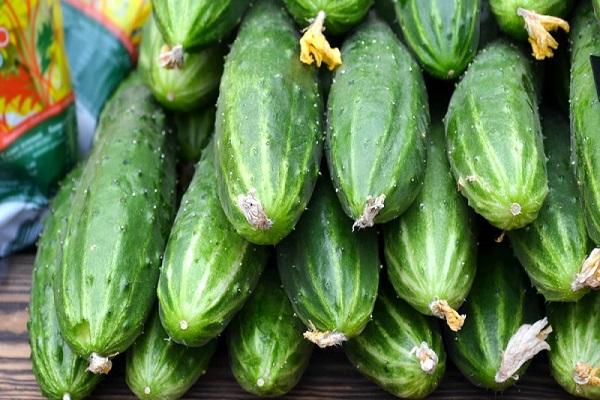
How to prepare a container?
To keep pickled cucumbers longer, the container for the blanks is thoroughly washed and sterilized. The lid for the container must be suitable, hermetically sealed.
Sterilization is one of the techniques that involves heat treatment of glass containers. High temperatures kill microorganisms. Any of the following methods is suitable for sterilization:
- in the microwave;
- in the oven;
- over steam;
- in boiling water.
How to pickle cucumbers in cold water?
Before preparing canned food, cucumbers are soaked for 5-6 hours. Cold water restores their structure, saturates them with moisture, which prevents further fermentation during pickling or salting.
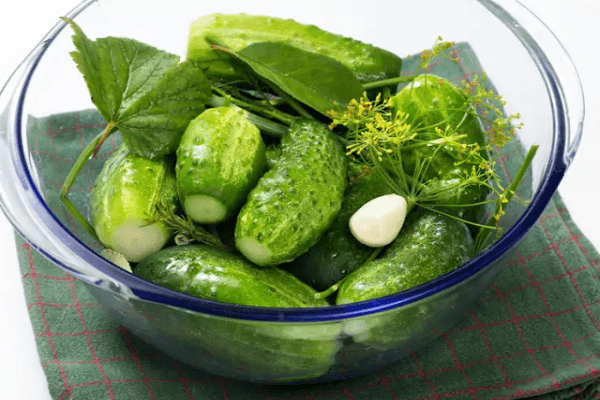
The taste and quality of the marinade is important in the preparation of pickled cucumbers. Brine for simple cold canning is prepared separately from 2 tablespoons of salt, 1 liter of water. The crystals must completely dissolve. Cucumbers with cut off tips are tightly distributed over the jars, filled with liquid. Banks are covered with saucers and left for 3-5 days. After the foam vanishes, the jars are poured with vinegar marinade, tightly closed and put into the basement.
A simple recipe for pickling under a nylon lid without vinegar
Marinade is prepared from 1 liter of boiling water, 1.5 tablespoons of sugar, 3 tablespoons of salt.Add peppercorns, cloves, bay leaves, dill umbrella. Cucumber jars are filled with hot brine. Cover with a nylon lid.
Mustard variant
Before cooking, vegetables are soaked in a tub of cold water for 2-3 hours. Cucumbers, onion rings, parts of pepper are laid out in jars. Then the marinade is prepared according to the classic recipe. Before pouring the brine, a spoonful of dry mustard powder is poured onto the top layer, then poured.
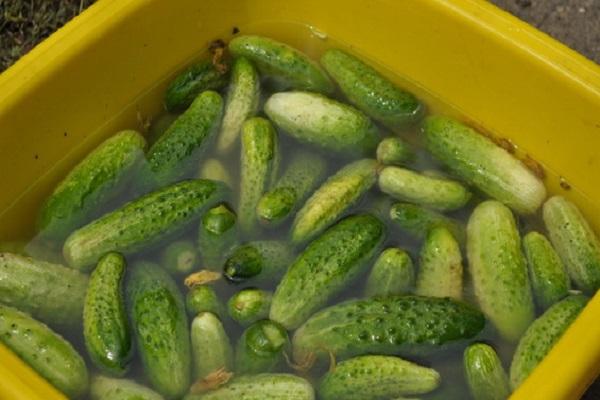
With vinegar
To the classic marinade recipe, add 1 tablespoon of 9 percent vinegar. The fill is poured into the workpiece, rolled up, turned over with the lid down.
With horseradish and garlic
Small horseradish leaves, whole garlic cloves are spread over the bottom of the jar. Then the cut-off cucumbers are placed. Layers are repeated using horseradish leaves and garlic to taste. The amount of garlic depends on the individual choice. Cover the last layer of cucumbers with a currant leaf and fill with vinegar-salt marinade.
With berry leaves
For the preparation of cucumbers, currant and cherry leaves are chosen. They must be whole and even. The bottom of the jar is covered with leaves, prepared soaked cucumbers are distributed. From above, the workpiece is covered with leaves, leaving holes for pouring. 1 tablespoon of sugar is poured with 1 liter of water, 3 tablespoons of salt are added.
The brine is boiled, then 50 milliliters of vinegar is added and removed immediately. The cooled marinade is poured into the workpiece, then sterilized, rolled up, turned over for infusion and cooling.
Advice! For blanks, you can use cherry leaves, mountain ash, as well as oak leaves.
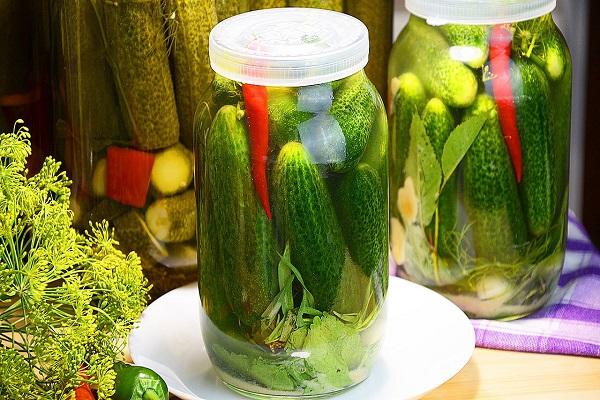
With chili
You won't surprise anyone with the addition of pepper, but chili preparations are a novelty in canning. For the marinade take:
- 100 milliliters of vinegar;
- 2 chili pods;
- 0.5 liters of water;
- 100 grams of sugar;
- 1 tablespoon of salt.
Mix the ingredients, boil for 5 minutes. Garlic cloves, onion rings, plates of vegetables are laid out on the banks. Then the prepared vegetables are poured with the cooled mixture. The containers are sterilized for 25 minutes, rolled up.
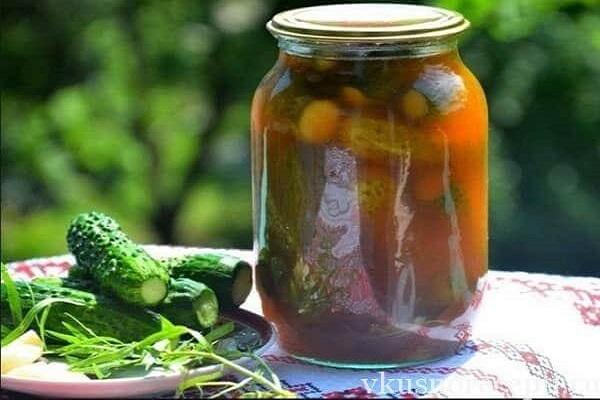
With vodka
The addition of vodka makes the cucumbers crispy, which is why this recipe is especially popular.
The cooking process begins with the preparation of vegetables: they are soaked for 6 hours. Then they are distributed over the prepared jars along with dill, garlic, bay leaf to taste. For each liter jar, take 1 tablespoon of salt. It is poured with boiling water and left to infuse for 2 days. Then the brine is drained, boiled. Add 100 milliliters of vodka to each can, and then refill it with brine. After that, they are rolled up and put away for storage.
With apple juice
This option is especially popular with apple lovers. Cucumbers are treated with boiling water, the tips are removed from both sides. 1 liter of apple juice is boiled with 1 tablespoon of salt. Prepared cucumbers are poured with this unusual marinade. Then they proceed to rolling and sterilization.
Information! To enhance the taste, blanched apple quarters are added to the workpiece. Pick up sour fruits.
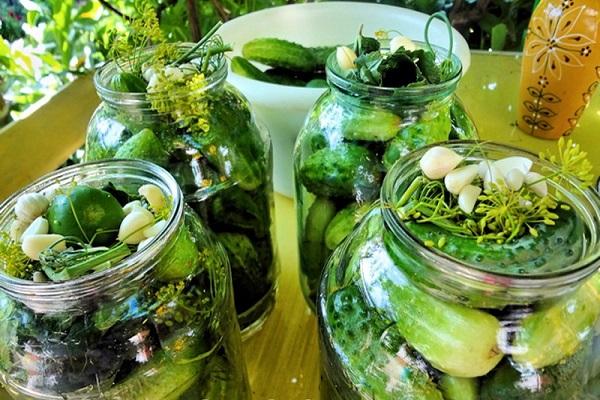
Further storage of workpieces
An important storage requirement is cooking according to all the rules. Sterilized workpieces are stored for 6 months or more. Too long storage is not recommended due to the inevitable chemical reactions inside the workpiece. For storage, rooms with a consistently low temperature and relative humidity are suitable.
In addition, there are general rules for storing conservation:
- pickles and marinades are not left near heating appliances;
- do not store on open balconies at subzero temperatures;
- keep out of direct sunlight.
If the rules of preparation and storage are observed, marinades can be stored for up to 2 years.

